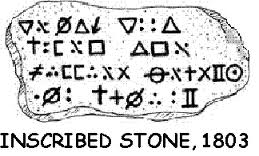It is believed the pyramid was built as a tomb for
fourth dynasty Egyptian pharaoh
Khufu and was constructed over a 20 year period. Khufu's
vizier,
Hemon, or
Hemiunu, is believed by some to be the architect of the Great Pyramid.[SUP]
[2][/SUP] It is thought that, at construction, the Great Pyramid was originally 280 Egyptian
cubits tall, 146.5 metres (480.6 ft) but with
erosion and absence of its
pyramidion, its present height is 138.8 metres (455.4 ft). Each base side was 440
cubits, 230.4 metres (755.9 ft) long. The mass of the pyramid is estimated at 5.9 million
tonnes. The volume, including an internal hillock, is roughly 2,500,000 cubic metres.[SUP]
[3][/SUP] Based on these estimates, building this in 20 years would involve installing approximately 800 tonnes of stone every day. Similarly, since it consists of an estimated 2.3 million blocks, completing the building in 20 years would involve moving an average of more than 12 of the blocks into place each hour, day and night. The first precision measurements of the pyramid were made by
Egyptologist Sir Flinders Petrie in 1880–82 and published as
The Pyramids and Temples of Gizeh.[SUP]
[4][/SUP] Almost all reports are based on his measurements. Many of the casing stones and inner chamber blocks of the Great Pyramid were fit together with extremely high precision. Based on measurements taken on the north eastern casing stones, the mean opening of the joints is only 0.5 millimetres wide (1/50th of an inch).[SUP]
[5][/SUP]
Materials
The Great Pyramid consists of an estimated 2.3 million limestone blocks with most believed to have been transported from nearby
quarries. The Tura limestone used for the casing was quarried across the river. The largest granite stones in the pyramid, found in the "King's" chamber, weigh 25 to 80
tonnes and were transported from
Aswan, more than 500 miles away. Traditionally, ancient Egyptians cut stone blocks by hammering wooden wedges into the stone which were then soaked with water. As the water was absorbed, the wedges expanded, causing the rock to crack. Once they were cut, they were carried by boat either up or down the Nile River to the pyramid.[SUP]
[15][/SUP] It is estimated that 5.5 million tons of limestone, 8,000 tons of granite (imported from Aswan), and 500,000 tons of mortar were used in the construction of the Great Pyramid.[SUP]
[16][/SUP]
The Easter Island Moai weigh 82-86 tons each and are set on astone platforms






